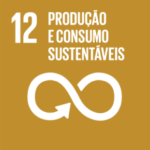When it comes to recycling electronic devices and accessories, such as cell phones, chargers or various cables, the answer to “But which recycling bin should I put them in?” isn’t always immediate. In this article we answer that question, with the support of Sociedade Ponto Verde.
We all have a drawer that holds everything we no longer use but don’t know how to get rid of (or that we think might still come in handy one day). In that drawer there will certainly be obsolete or no longer working cell phones, their chargers and a series of cables, some of which we no longer know where they could fit.
When it comes to cleaning up and throwing it away, it’s important to realize that this is not ordinary waste and doesn’t even have a place in the recycling bins we use for paper, plastic and cardboard.
“Electrical and electronic waste, known as E-waste (REE in portugal), such as cell phones, small domestic appliances, computer mice, cables and chargers can be deposited in the appropriate containers, which are usually red. These containers can be found near commercial areas,” explains Sociedade Ponto Verde to Peggada.
Why recycle?
The United Nations estimates that by 2050, 120 million tons of electrical and electronic waste will be generated around the world every year.
In addition, waste from electrical and electronic equipment (WEEE) contains highly dangerous substances such as mercury, lead and cadmium, which are harmful to humans and the planet. That’s why it’s important to dispose of this equipment in the bins designed for the purpose, usually located in hypermarkets. In addition, stores that sell electrical and electronic products, such as Worten, also collect these items.
This system has yelded results: in 2023, more than 27,000 tons of electronic equipment were collected and sent for treatment by the Electrão. A new record.
This is the best result in recent years: 67% more electrical equipment recycled than in 2021, with the reuse of electrical equipment increasing by more than 100%.
The organization explains in a statement that these results were achieved “thanks largely to the involvement of the operational partners with whom Electrão works, but they also reflect the exponential increase in the number of collection sites”. The Electrão Network has 11,500 collection points across the country, which is 3,000 more than the previous year, representing an increase of 35%.
______
If you still have questions, Sociedade Ponto Verde has four ways to answer them:
. Via Gervásio’s WhatsApp (914619286)
. In the Waste App, Quercus’ application with the support of Sociedade Ponto Verde
. Via the Linha Ponto Verde (Green Dot Line), 210 102 480
. Via email: info@pontoverde.pt

Marta Cerqueira is from Minho and a vegetarian. Luckily, she lives in Lisbon, where there is more tofu than sarrabulho. She has been a journalist for over 15 years, the last of which writing about food and sustainability. Now, out of the newsroom, she continues to write whenever she can, be it in magazines, journals, post its, or on her Instagram page, which she uses to share a life divided between being a mom-person-foodie-traveler. Still, she created Peggada so she could write about what doesn't fit in a magazine, journal, post it or Instagram: a better world.
Related articles
Sustainable Development Goals 🍃

This article promotes an action that encourages the reduction of waste generation through prevention, reduction, recycling, and reuse.
➡️ To discover more businesses that are aligned with Sustainable Development Goal 12 “Sustainable Production and Consumption” click here.
➡️ For news, tips and interviews about this topic, click here.
➡️ Want to know more about the 17 United Nations Sustainable Development Goals? Click here
Esta publicação também está disponível em:
![]() Português (Portuguese (Portugal))
Português (Portuguese (Portugal))




